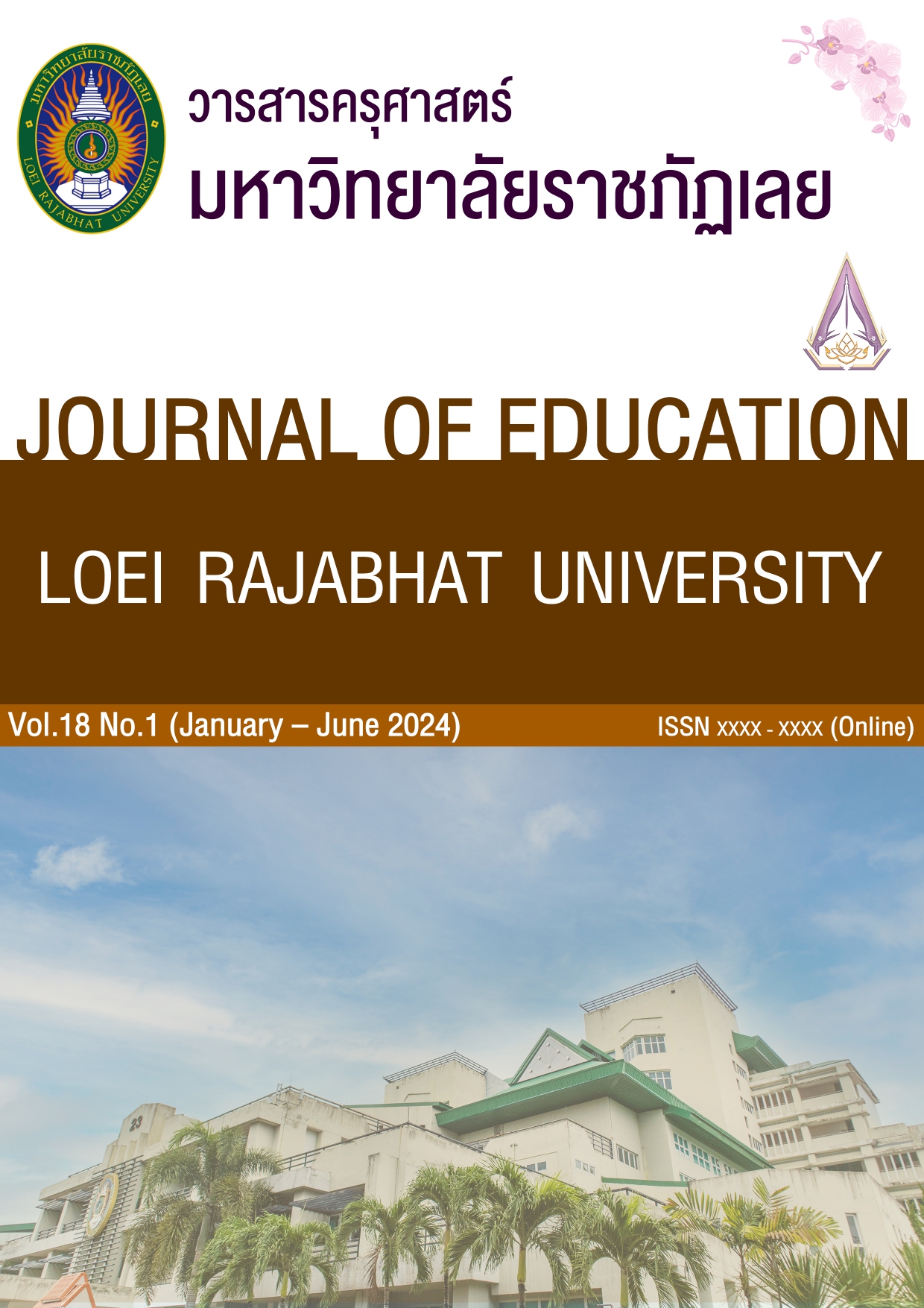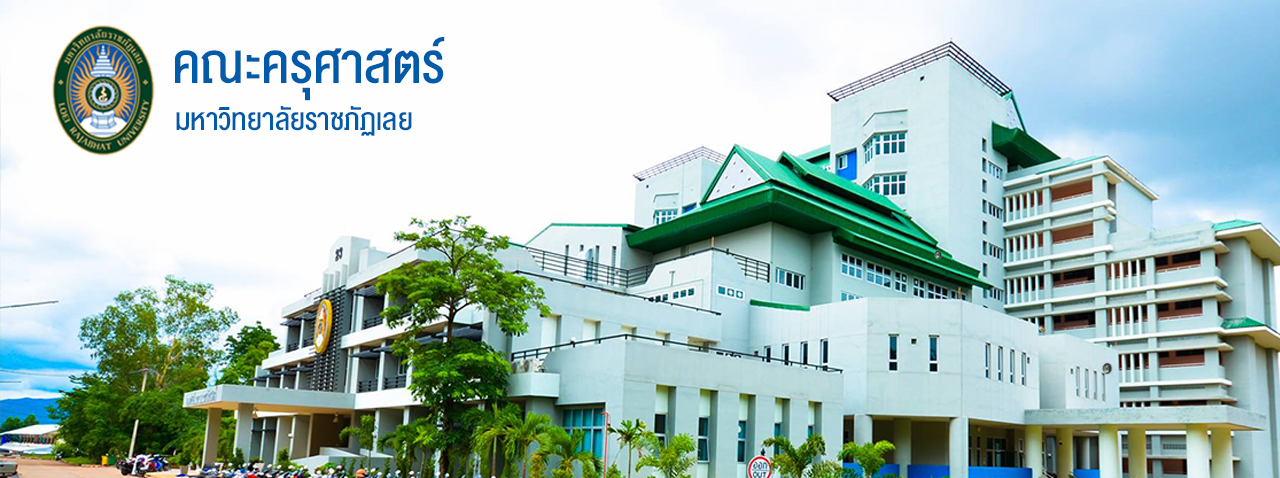Development of STLEAM Education Curriculum for Border Patrol Police School Teachers
Keywords:
STLEAM education, curriculum design, mathematics skills and processes, learning managementAbstract
The objective of this research is threefold: (i) to develop a STLEAM education curriculum for teachers at Border Patrol Police Schools. (ii) To compare understanding, ability to design curricula, and learning management before and after using the developed STLEAM education curriculum for teachers at the Border Patrol Police School; and (iii) To compare
the mathematical skills and processes of Border Patrol Police School students before and after being organized to learn STLEAM education. This research is conducted as quasi-experimental study with a target group of 20 teachers and 90 primary school students participating in the Development of Competencies for Border Patrol Police School Teachers project. The research tools include questionnaires to measure the understanding of STLEAM Education learning management, curriculum design and learning management abilities in STLEAM Education, and mathematics skills and processes. The research findings indicate that : (i) The Border Patrol Police School Teacher Education curriculum has been developed with three courses: Khai-Songna-Markabken, Nang-fha-Cluck-Phoon, and Cha-bai-mon. (ii) Understanding of STLEAM education management and curriculum design and learning management capability of Border Patrol Police School Teachers after training is higher than before statistically at a significant level of 0.05; (iii) Mathematical skills and processes of Border Patrol Police School students after being held higher than STLEAM education before being organized STLEAM education statistically at a significant level of 0.05
References
รัฐธรรมนูญ. (2560). รัฐธรรมนูญแห่งราชอาณาจักรไทย (3). แอคทีฟ พริ้นท์.
จิตรา มีคำ กฤธยากาญจน์ โตพิทักษ์ และนิคม นาคอ้าย. (2556). ปัญหาและแนวทางการบริหารจัดการโครงการส่งเสริมคุณ ภาพการศึกษาของโรงเรียนตำรวจตระเวนชายแดน สังกัดกองกำกับการตำรวจตระเวนชายแดนที่ 31 ในพื้นที่จังหวัดพิษณุโลก. วารสารบัณฑิตศึกษา มหาวิทยาลัยราชภัฏพิบูลสงคราม, 7(1), 100-110.
ณัฐวัชร จันทโรธรณ์ และไพโรจน์ ญัตติอัครวงศ์. (2565). การพัฒนาหลักสูตรและการเรียนการสอน. วารสารมหาจุฬาวิชาการ, 9(1), 336–347.
ปพนวัจน์ ลภัสภิญโญโชค. (2559). การพัฒนารูปแบบการสอนเพื่อส่งเสริมมโนทัศน์และกระบวนการทางคณิตศาสตร์สำหรับนักเรียนระดับประถมศึกษา. วารสารศิลปากรศึกษาศาสตร์วิจัย มหาวิทยาลัยศิลปากร, 8(2), 205-218.
วศิณีย์ อิศรเสนา ณ อยุธยา. (2560). เรื่องน่ารู้เกี่ยวกับสะเต็มศึกษา. กรุงเทพฯ: จุฬาลงกรณ์มหาวิทยาลัย.
วิจารณ์ พานิช. (2556). วิถีสร้างการเรียนรู้เพื่อศิษย์ (พิมพ์ครั้งที่ 3). ตถาตา.
สุพรรณี ชาญประเสริฐ. (2556). การจัดการเรียนรู้วิทยาศาสตร์และทักษะที่จำเป็นในศตวรรษที่ 21. สถาบันส่งเสริมวิทยาศาสตร์และเทคโนโลยี, 42(185), 10-13.
สุภัค โอฬาพิริยกุล. (2562). STEAM education: นวัตกรรมการศึกษาบูรณาการสู่การจัดการเรียนรู้. วารสารวิจัยและพัฒนาหลักสูตร, 9(1), 1-16.
เสาวภาคย์ วงษ์ไกร, ปาริชาติ ภูภักดี, อมรรัตน์ สังข์สุวรรณ, ธเนศพลร์ วสุอนันต์กุล,ประวีณ์นุช วสุอนันต์กุล, ธนาพูน วงค์ษา และปัจจรี ศรีโชค. (2565). ผลของการจัดกิจกรรมการเรียนรู้รูปแบบ STLEAM
ต่อสมรรถนะครูโรงเรียนตำรวจตระเวนชายแดน. การวิจัยเพื่อพัฒนาท้องถิ่นด้วยโมเดลเศรษฐกิจใหม่สู่เป้าหมายการพัฒนาที่ยั่งยืน. การประชุมวิชาการระดับชาติ ราชภัฏเลยวิชาการ มหาวิทยาลัยราชภัฏเลย ครั้งที่ 8. (น. 494-502). มหาวิทยาลัยราชภัฏเลย.
อิสระ ชอนบุรี วาโร เพ็งสวัสดิ์ และอภิสิทธิ์ สมศรีสุข. (2565). การพัฒนาหลักสูตรฝึกอบรมภาวะผู้นำทางวิชาการของครูในโรงเรียนสังกัดสำนักงานเขตพื้นที่การศึกษาประถมศึกษานครพนม เขต 2. วารสารบัณฑิตศึกษา มหาวิทยาลัยราชภัฏสกลนคร. 18(80). 80-89
Altan, E. B., Üçüncüoglu, I., & Öztürk, N. (2019). Preparation of out-of-school learning environment based on science, technology, engineering, and mathematics education and investigating its effects. Science Education International, 30(2), 138-148. https://doi.org/10.33828/sei.v30.i2.7
Brown, R. E., & Bogiages, C. A. (2019). Professional development through STEM integration: How early career math and science teachers respond to experiencing integrated STEM tasks. International Journal of Science and Mathematics Education, 17(1), 111-128. https://doi.org/10.1007/s10763-017-9863-x
Hahn, I., Hwang, S., & Yoo, J. (2016). Development and management of the advanced STEAM teacher training program. Journal of the Korean Association for Science Education, 36(3), 399-411. https://doi.org/10.14697/jkase.2016.36.3.0399
Herro, D., Quigley, C., & Cian, H. (2019). The challenges of STEAM instruction: Lessons from the field. Action in Teacher Education, 41(2), 172-190.
Kim, B., & Kim, J. (2016). Development and validation of evaluation indicators for teaching competency in STEAM education in Korea. Eurasia Journal of Mathematics, Science and Technology Education, 12(7), 1909-1924.
https://doi.org/10.12973/eurasia.2016.1537a
Korea foundation for the advancement of science and creativity. (2016). Introduction to STEAM education. Seoul: KOFAC.
Liao, C. (2016). From interdisciplinary to transdisciplinary: An arts-integrated approach to STEAM education. Art Education, 69(6), 44-49.
https://doi.org/10.1080/00043125.2016.1224873
Nuangchalerm, P., Prachagool, V., Prommaboon, T., Juhji, J., Imroatun, I., & Khaeroni, K. (2020). Views of primary Thai teachers toward STREAM education. International Journal of Evaluation and Research in Education, 9(4), 987-992.
https://doi: 10.11591/ijere.v9i4.20595
Pavlou, V. (2020). Art technology integration: Digital storytelling as a transformative pedagogy in primary education. International Journal of Art & Design Education, 39(1), 195-210. https://doi.org/10.1111/jade.12254
Pugach, M. C., Blanton, L. P., Mickelson, A. M., & Boveda, M. (2020). Curriculum theory:
The missing perspective in teacher education for inclusion. Teacher Education and Special Education, 43(1), 85-103. https://doi.org/10.1177/0888406419883665
Ring, E. A., Dare, E. A., Crotty, E. A., & Roehrig, G. H. (2017). The evolution of teacher conceptions of STEM education throughout an intensive professional development experience. Journal of Science Teacher Education, 28(5), 444-467.
https://doi.org/10.1080/1046560X.2017.1356671
Siribunnam, S., Bednarova, R., & Nuangchalerm, P. (2019). The effect of SSI overlap STEM education on secondary students’ socio-scientific decision making. Journal of Physics: Conference Series (Vol. 1340, No. 1, p. 012006). IOP Publishing.
https://doi.org/10.1088/1742-6596/1340/1/012006
Srikoom, W., Faikhamta, C., & Hanuscin, D. (2018). Dimensions of effective STEM integrated teaching practice. K-12 STEM Education, 4(2), 313-330.
Thibaut, L., Knipprath, H., Dehaene, W., & Depaepe, F. (2018). The influence of teachers’ attitudes and school context on instructional practices in integrated STEM education. Teaching and Teacher Education, 71, 190-205.
https://doi.org/10.1016/j.tate.2017.12.014
Tondeur, J., Scherer, R., Baran, E., Siddiq, F., Valtonen, T., & Sointu, E. (2019). Teacher educators as gatekeepers: Preparing the next generation of teachers for technology integration in education. British Journal of Educational Technology, 50(3), 1189-1209.
https://doi.org/10.1111/bjet.12748
Yuenyong, C. (2019). Lesson learned of building up community of practice for STEM education in Thailand. AIP Conference Proceedings (Vol. 2081, No. 1, p. 020002). AIP Publishing LLC. https://doi.org/10.1063/1.5093997
Downloads
Published
How to Cite
Issue
Section
License

This work is licensed under a Creative Commons Attribution-NonCommercial-NoDerivatives 4.0 International License.
เนื้อหาและข้อมูลในบทความที่ตีพิมพ์ในวารสารครุศาสตร์ มหาวิทยาลัยราชภัฏเลย ถือเป็นความคิดเห็นและความรับผิดชอบของผู้เขียนบทความโดยตรง กองบรรณาธิการวารสารไม่มีส่วนในความคิดเห็นและความรับผิดชอบใดที่เกี่ยวข้องกับบทความดังกล่าว ทั้งนี้ บทความที่ได้รับการตีพิมพ์ในวารสาร ฯ ถือเป็นลิขสิทธิ์ของวารสาร








